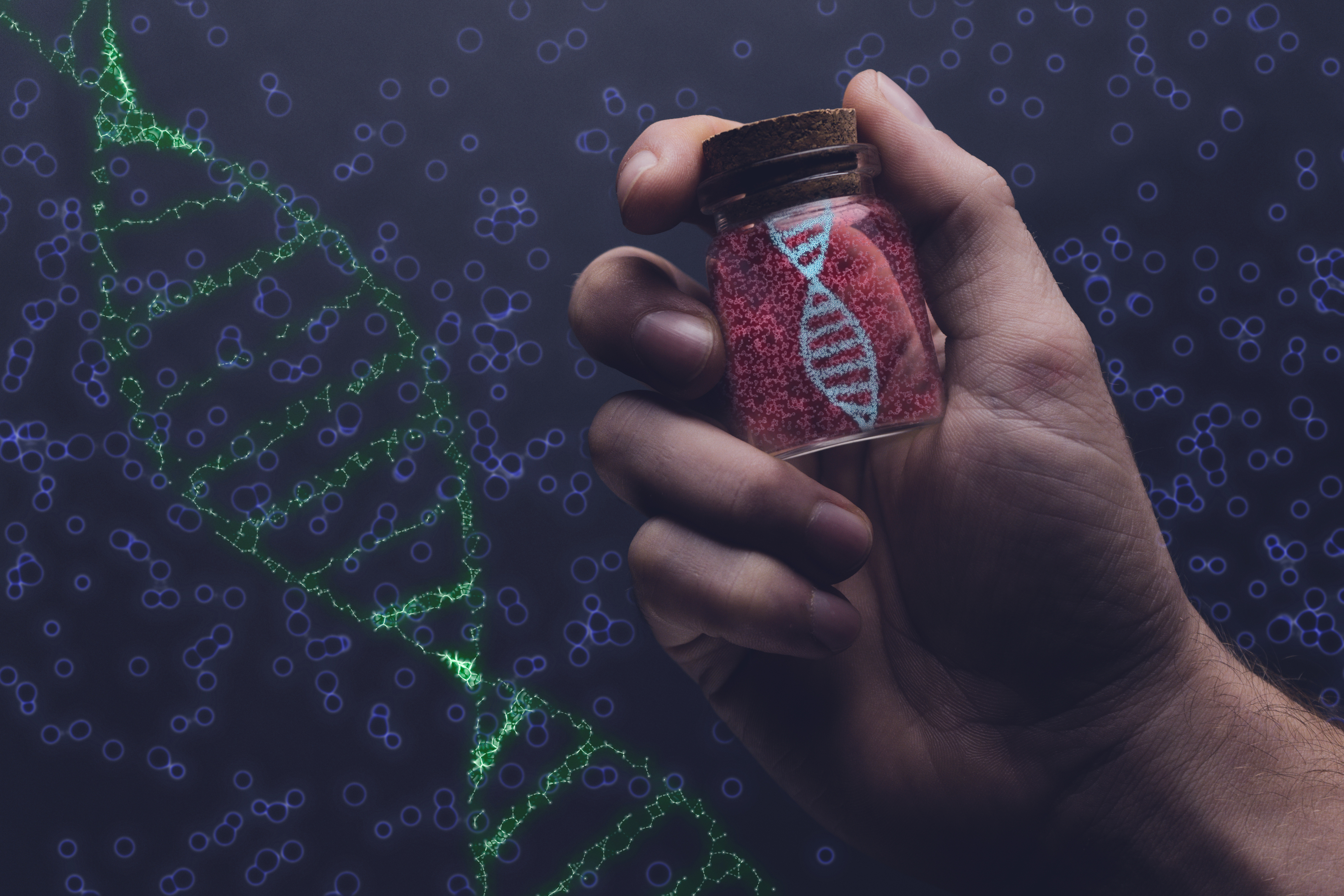Top 10 Genomics News Stories of 2019

We've seen some exciting research developments take place in the genomics field throughout 2019. In this list, we revisit the top 10 most-read news stories, published on Technology Networks.
A Toast – To the Genetic Diversity of Grapes
Here's a discovery well worth toasting: A research team led by Professor Brandon Gaut with the University of California, Irvine and Professor Dario Cantu with the University of California, Davis deciphered the genome of the Chardonnay grape. By doing so, they have uncovered something fascinating – grapes inherit different numbers of genes from their mothers and fathers.
"Each of us inherits one copy of their gene from their mother and one from their father," said Gaut. "One would assume that the grapes inherit two copies of every gene, too, with one coming from each of their two parents. However, we found there was just one copy, not two, for 15 percent of the genes in Chardonnay, and it was also true of Cabernet Sauvignon grapes. Together, that means that grape varieties differ in the presence or absence of thousands of genes."
The research team also showed that red grapes have actually mutated into white grapes on several different occasions. Each mutation included a large chromosomal change that altered the number of copies of key color genes. Fewer copies of the color genes cause white grapes.
Published in: Nature Plants
Read full story
 Credit: Road Trip with Raj on Unsplash.
Credit: Road Trip with Raj on Unsplash.
To Sleep Is to Heal: How the Immune System Regulates Sleep When Sickness Strikes
In a study utilizing a fruit fly model, researchers from the Perelman School of Medicine at the University of Pennsylvania identified a single gene, named NEMURI, that increases the need for sleep. By knocking out the NEMURI gene so that it was no longer expressed, the scientists were able to study how the gene controls the flies’ sleep patterns. They found that the flies were more easily aroused during daily sleep, and that their acute need for an increase in sleep (induced by sleep deprivation or infection) was reduced. Interestingly, sleep deprivation, which naturally increases the need for sleep, stimulated NEMURI expression in a small set of neurons in the sleep-promoting structure of the brain. When inducing overexpression of NEMURI, increased sleep and survival in bacteria-infected flies was observed when compared to healthy control flies. As increased sleep during sickness promotes survival in the fly model, it is possible that the sleep-promoting role of the NEMURI protein is equally as important as it’s antimicrobial function.
Published in: Science
Read full story
Study of Almost Half a Million People Finds There Is No Single “Gay Gene”
Scientific research endeavors to explain all aspects of life – what constitutes a healthy person, why we suffer from disease, why we engage in certain behaviors, and even our sexual orientation. In this study, an international team of scientists that specialize in human genetics set out to study the role of genetics in shaping sexual behavior. The researchers used information from 470,000 research participants that had contributed DNA and provided self-report questions regarding their sexual behavior to large-scale research projects or direct-to-consumer genetic companies, such as the UK Biobank and 23andMe, Inc.
From the results, the researchers could not identify any patterns among genetic variants that could be used to predict or identify a person's sexual behavior. "What we found was that there is no one “gay gene” – instead, there are many, many genes that influence a person’s likelihood of having had same-sex partners," says Brendan Zietsch, an ARC Future Fellow in the School of Psychology at the University of Queensland.
Published in: Science
Read full story
 Credit: Pixabay.
Credit: Pixabay.Researchers Use CRISPR To Correct Mutation in Duchenne Muscular Dystrophy Model
In this study, a team of researchers explored whether muscle stem cells from mice could be efficiently edited. The researchers first delivered the gene editing tools to normal mouse muscle through Adeno-associated virus (AAV) 9, a virus that was recently approved by the U.S. Food and Drug Administration to treat spinal muscular atrophy. The researchers' reasoning was correct, as they found abundant edited cells in the regenerated muscle. They then tested if muscle stem cells in a mouse model of Duchenne muscular dystrophy could be edited with CRISPR. Like what they found in normal muscle, the stem cells in the diseased muscle were also edited. Cells regenerated from these edited cells successfully produced dystrophin.
Published in: Molecular Therapy
Read full story
Semi-identical Twins: Three Sets of Chromosomes, Two Babies
Published in: The New England Journal of Medicine
Read full story
New Doctors’ DNA Ages 6 Times Faster Than Normal in First Year
The most intense year of a doctor's training, residency (also called the intern year), was shown in this study to make DNA age six times faster than normal. The study was the first to measure telomere length before and after individuals faced a common prolonged intense experience. The researchers asked 250 recently graduated medical students to contribute a sample of their DNA before they began their intern year, and then followed up to get another sample at the end of that year. The interns also took a lengthy questionnaire before their training began, and again at several points during, and at the end of the intense year. The results demonstrated that some new doctors went into residency with telomeres that were already shorter than their peers. This included those who said their family environment early in life was especially stressful – which echoes previous findings about the impacts of such an upbringing on telomere length. But when the team looked at the results of the DNA tests taken after intern year ended, only one factor that they studied emerged with a clear link to telomere shrinkage: the number of hours the interns worked each week.
Published in: Biological Psychiatry
Read full story
Is DNA One in a Million?
Using sophisticated computational methods, scientists from the Earth-Life Science Institute (ELSI) at the Tokyo Institute of Technology, the German Aerospace Center (DLR) and Emory University explored the "chemical neighborhood" of nucleic acid analogues. Surprisingly, they found well over a million variants, suggesting a vast unexplored universe of chemistry relevant to pharmacology, biochemistry and efforts to understand the origins of life. The molecules revealed by this study could be further modified to gives hundreds of millions of potential pharmaceutical drug leads.
Published in: The Journal of Chemical Information and Modeling
Read full story

Blind Mice Regain Sight After Single Gene Insertion
It was surprisingly simple. University of California, Berkeley, scientists inserted a gene for a green-light receptor into the eyes of blind mice and, a month later, they were navigating around obstacles as easily as mice with no vision problems. They were able to see motion, brightness changes over a thousand-fold range and fine detail on an iPad sufficient to distinguish letters.
Published in: Nature Communications
Read full story
Older Men and Fertility: Tick Tock Goes the "Biological Clock"
Men who delay starting a family have a ticking "biological clock" – just like women – that may affect the health of their partners and children, according to Rutgers researchers. The study reviewed 40 years of research on the effect of parental age in terms of fertility, pregnancy and the health of children. They found that men 45 years and older can experience decreased fertility and put their partners at risk for increased pregnancy complications such as gestational diabetes, preeclampsia and preterm birth. Infants born to older fathers were found to be at higher risk of premature birth, late still birth, low Apgar scores, low birth weight, higher incidence of newborn seizures and birth defects such as congenital heart disease and cleft palate. As they matured, these children were found to have an increased likelihood of childhood cancers, psychiatric and cognitive disorders, and autism.
Damage to sperm from stresses of aging can lead to a decrease in sperm number and a change in the sperm and egg that is passed from parent to offspring and becomes incorporated into the DNA of cells in the offspring's body. "In addition to decreasing fertilization potential, this can also influence the pregnancy itself, as is noted by increased pregnancy risks when conception is successful," said study author Gloria Bachmann.
Published in: Maturitas
Read full story
Beauty May Not Lie in the Eye of the Beholder – It May Lie in Genetics
Several genes were identified across individuals that were measured as "attractive", and, interestingly, these genes differed across the sexes. In women, specific genetic variants associated with beauty were also related to genes impacting body mass. In contrast, variants associated to attractiveness in males were linked to genes affecting blood cholesterol levels.
Published in: PLOS Genetics
Read full story







